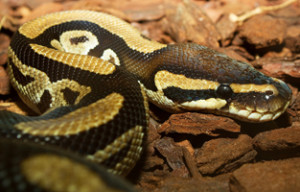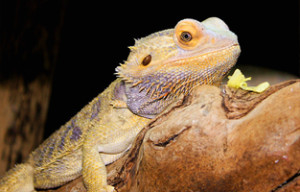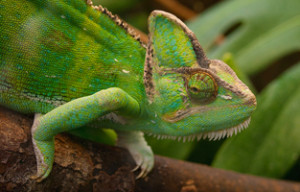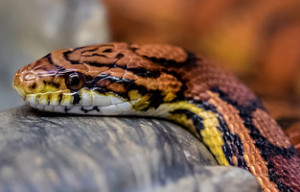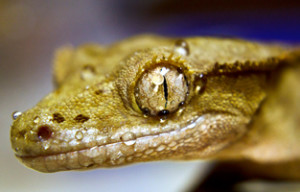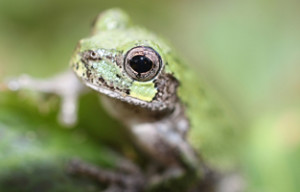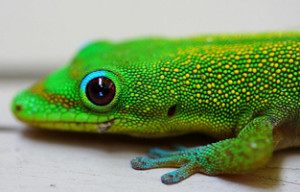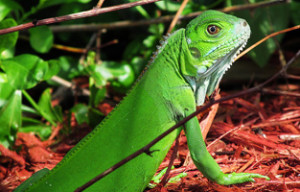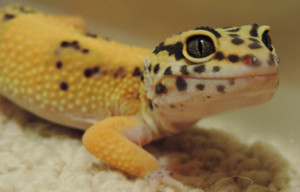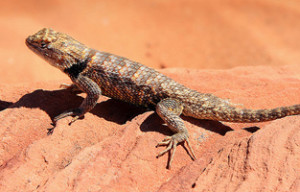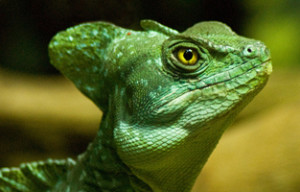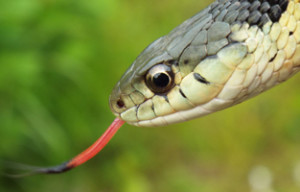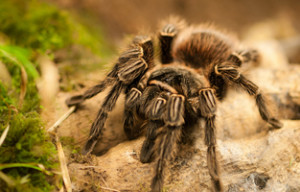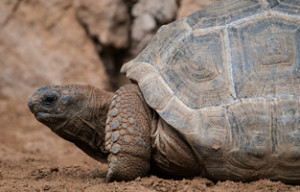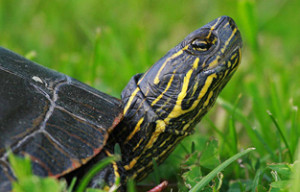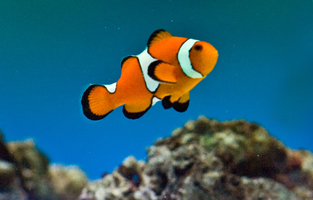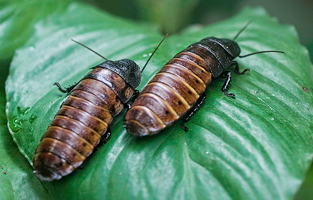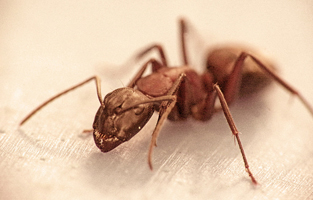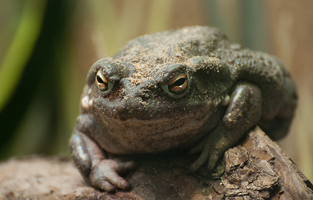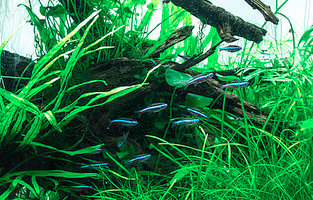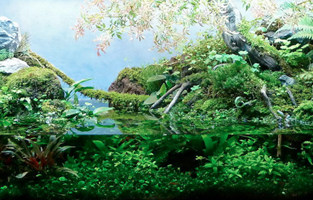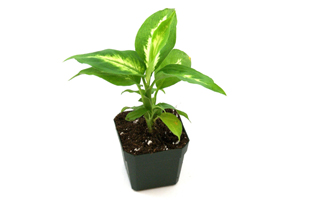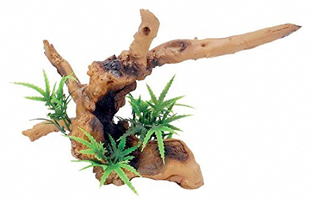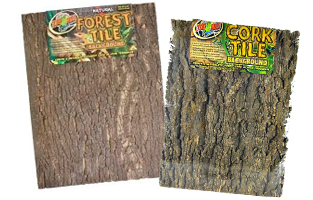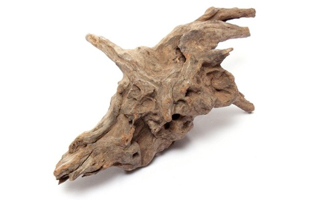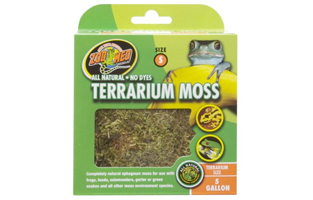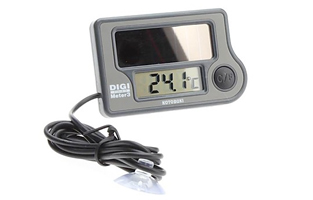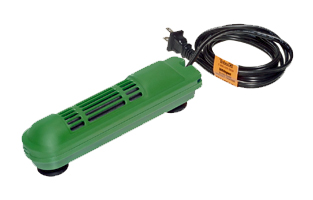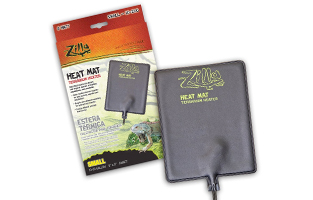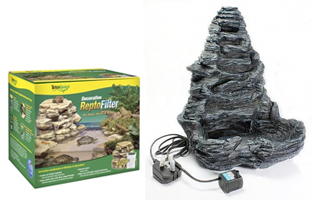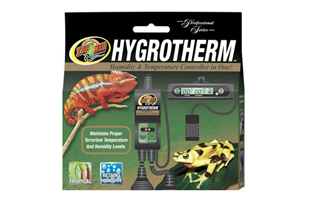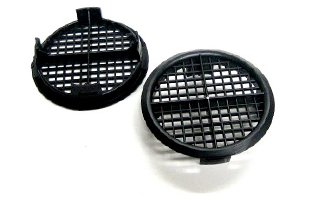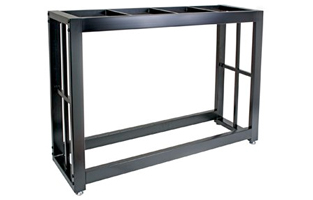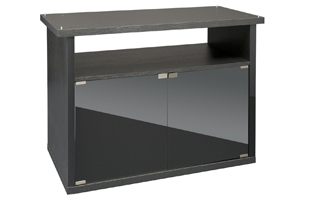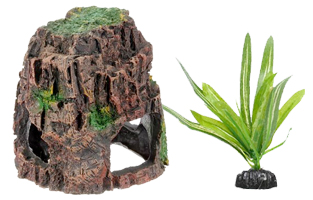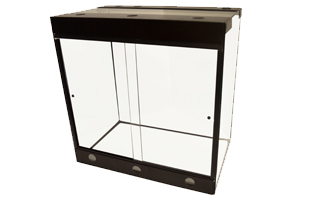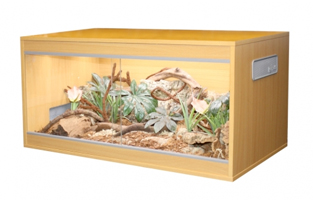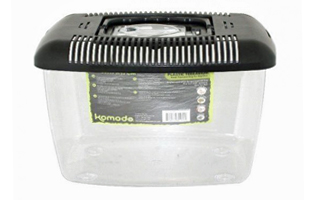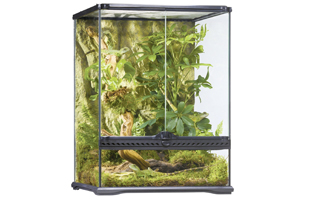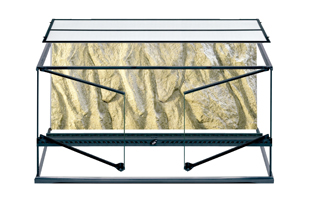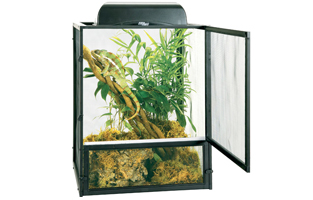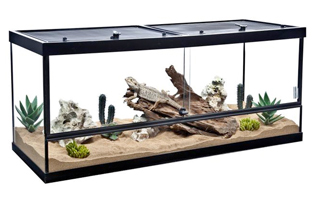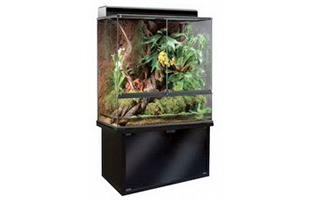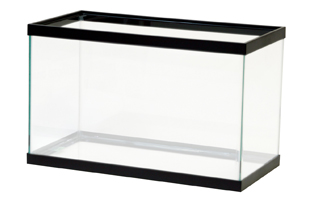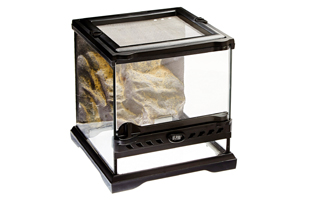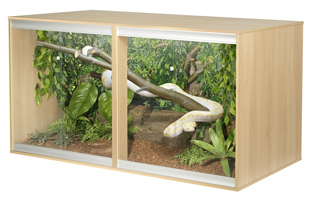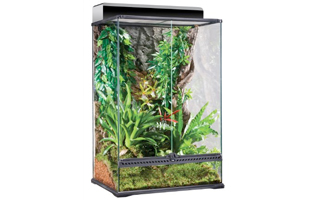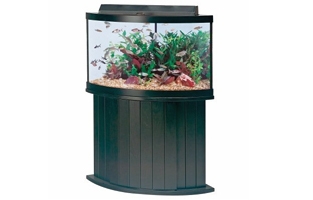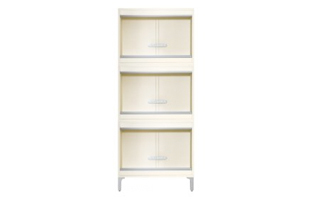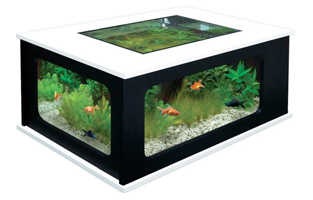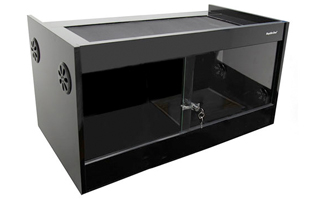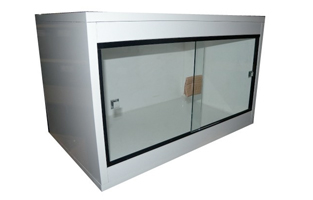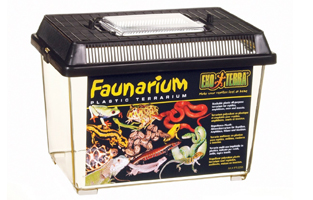Hello and welcome to VIVARIUM FOR SALE… a beginner’s guide to aquariums, aquaponics and fish tank fun!
Find a vivarium for sale – Frogs, snakes, lizards, turtles, amphibians, insects, spiders, fish and more are all kept inside an aquarium, terrarium or vivarium.
Amphibian, Insect & Reptile Vivariums
While keeping plants in a vivarium is extremely common, animals are usually the stars of most vivarium displays. Whether you have an aquarium, a terrarium, or even a penguinarium, you have the potential to house one or more of the following animals. Click on the animal you wish to keep in order to learn more about that animal and how to setup the perfect vivarium for that creature.
![]()
Because the natural environment that each animal lives in is so unique, it requires that each vivarium setup be suited for that animal. So, pick the animal you want to have most, learn what it takes to create the perfect vivarium for that creature, and then use the vivarium building techniques and checklists on this page to go about creating the perfect vivarium for your animal of choice.
What is a Vivarium?
A vivarium (which means “place of life” in Latin) is a man-made enclosure for keeping and raising plants and/or animals for observation and/or research. A portion of the enclosed ecosystem is usually simulated on a small scale, with built in external controls for environmental conditions (such as temperature and humidity).

A vivarium may be small enough to sit on a desk or table, such as a terrarium or an aquarium, or may be a very large structure, possibly outdoors. Small vivaria for sale commonly house plants, insects, spiders, amphibians and small reptiles. Large vivaria, particularly those holding organisms capable of flight, often house reptiles, snakes and birds. The largest vivariums are usually build with some sort of a dual-door mechanism such as a sally port for entry and exit, so that the outer door can be closed to prevent escape before the inner door is opened.
The word “vivarium” was not heavily used until a publication called “Vivarium”, the first of its kind, was created by Phillipe De Vosjoli in San Diego, California to share information about the keeping of reptiles, amphibians and other terrestrial animals in captivity. It wasn’t until this publication came out that the word “vivarium” began to be used among those withing to keep or show off their plants and animals. Even today, the word “vivarium” is largely unknown by the general public, while similar words, such as “aquarium” and “terrarium” are more commonly used.
Vivarium or Terrarium or Aquarium? – What’s The Difference?
Because the word “vivarium” is still relatively unknown by both the general public and even some of those within the scientific community, it’s no surprise that there is some confusion between vivariums, terrariums and aquariums. So, which word is correct? Is it best to say, “Aquarium? Terrarium? or Vivarium for sale?”

On the left is an AQUARIUM housing a school of fish; in the middle is a VIVARIUM housing one large snake; and on the right is a TERRARIUM housing one or two small plants. If you want to be technically correct, both aquariums and terrariums are a type of vivarium. A terrarium (which typically houses plants or small animals) is a type of vivarium… and an aquarium (which typically houses fish and underwater plants) is also a type of vivarium.
Types of Vivariums
There are a number of different types of vivariums – aquariums and terrariums are not the only types. Below you will find a short list of the known types of vivariums currently used by scientists, zoos, at-home pet collectors and general plant/animals lovers.
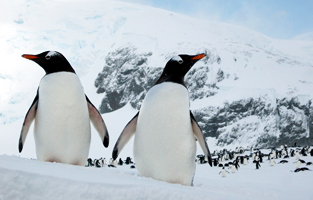
As you can see, there are a whole host of vivariums to choose from… and the various types of vivariums are usually sorted and organized by the environment they are trying to re-create or the plants/animals they are hoping to house.
Vivarium Supplies
Building a vivarium can be as simple or as complex as you wish to make it. Because each animal requires such a unique environment, however, it’s best to seek out the vivarium supplies that will make your animal happiest, and then go about building the vivarium yourself – adding personal touches as your budget and creativity permit. Below you will find links to our recommended vivarium products – plants, mosses, woods, backgrounds, heaters, vents, water features and a whole lot more!
![]()
If, for some reason, there is a vivarium accessory that you can’t find here on our website, try searching for “vivarium supplies,” “aquariums supplies,” or “terrarium supplies” on Amazon or Google. Also, be sure to check out the links at the bottom of this page for a detailed listing of online stores that specialize in vivarium products and accessories.
How To Build A Vivarium
It’s pretty rare to find a finished vivarium for sale on the Internet or at your local pet shop. While it is possible to find a used vivarium for sale, most vivariums are sold in pieces – starting with a glass, wood or plastic container of some kind, and then being kitted out with plants, moss, rocks and other accessories (such as waterfalls, heat mats, thermostats, humidifiers and more). What this means is that most vivariums are custom built and totally unique to you and the plant(s) or animal(s) that you are wishing to keep.
Step 1: Buy Or Build An Enclosure
A vivarium is usually made from clear container (often plastic or glass). Unless it is an aquarium, it does not need to withstand the pressure of water, so it can also be made out of wood or metal, with at least one transparent side. Modern vivariums are sometimes constructed from epoxy-coated plywood and fitted with sliding glass doors. They may be cubical, spherical, cuboidal or other shapes. The choice of materials depends on the desired size and weight of the entire ensemble, resistance to high humidity, the cost and the desired quality.
![]() Plastic vivariums are by far the cheapest and are usually used to house the smallest of plants and animals. Insects, ants and small amphibians are usually kept in plastic vivariums. Plastic vivariums are also commonly used to transport animals from one vivarium to another – such as when moving specimens from your local pet store to a more permanent vivarium constructed in your home.
Plastic vivariums are by far the cheapest and are usually used to house the smallest of plants and animals. Insects, ants and small amphibians are usually kept in plastic vivariums. Plastic vivariums are also commonly used to transport animals from one vivarium to another – such as when moving specimens from your local pet store to a more permanent vivarium constructed in your home.
Wood vivariums are usually used to house reptiles and amphibians. Geckos, iguanas, snakes and chameleons all thrive in wooden vivarium enclosures. Coating the inside of a wood vivarium helps to retain the natural effect of the environment. Epoxy-coated plywood vivariums retain heat better than glass or plastic enclosures and are able to withstand high degrees of humidity. Many terrariums are built of wood, with sliding glass (or glass doors) built into either the front, back, or both sides of the vivarium to allow for the specimens inside to be fed, observed and handled.
Finally, glass is commonly used in the construction of aquariums (used to house underwater plants and fish), insectariums (used to display insects of various kinds) and formicariums (or ant farms). When buying an aquarium, make sure the enclosure is rated to withstand the pressure generated by the water you’ll be pouring into the container. Not all glass vivariums are meant to be used as aquariums!
Step 2: Flooring – Lay Your Foundation
The floor of a vivarium must have sufficient surface area for the species living inside. The height of the enclosure is also important for larger plants, climbing plants, or for tree climbing animal species (such as iguanas, birds and some types of snakes). The width of your vivarium must be great enough to create the sensation of depth, both for the pleasure of the spectator and the good of the species inside.
The most commonly used flooring substrates are: common soil (which you can find in your own backyard), small pebbles, sand, peat, chips of various trees, wood mulch, vegetable fibers (of coconut, for example), or a combination of these. The choice of the substrate flooring depends on the needs of the plants and/or animals inside your vivarium, the moisture levels, the risks involved and aesthetic aspects. Please see our list of animal vivariums for more information on the proper flooring for your specific animal.
Sterile vivariums, sometimes used to ensure high levels of hygiene (especially during quarantine periods), generally have very straightforward, easily removable substrates such as paper tissue, wood chips and even newspaper. Typically, a low-nutrient, high-drainage substrate is placed on top of a false bottom or layer of LECA or stones, which retains humidity without saturating the substrate surface.
Rocks and pebbles are the most common type of flooring for aquariums. Wood chips, sand and dirt is most common in terrariums. Dirt/sand is most common in Formicariums (ant farms). And finally, dirt, mud, moss and wood mulch are the most commonly used flooring material in Paludariums and ripariums.
Step 3: Lighting Your Vivarium
A lighting system is necessary in just about every vivarium type. And like so many other aspects of building a vivarium, the lights you use and the number of lights you provide for the species inside your vivarium will need to be adapted to the requirements of the animal and plant species inside. For example, certain reptiles in their natural environment need to heat themselves by the sun, so various lights and bulbs may be necessary to simulate this type of environment in a terrarium.
Also, certain plants or diurnal animals need a source of UV to help synthesize Vitamin D and assimilate calcium. Such UV can be provided by specialized fluorescent tubes or daylight bulbs, which recreate the reptiles’ natural environment and emit a more natural sunlight effect compared to the blue glow of a fluorescent tube.
A day/night regulator might be needed to simulate with accuracy the alternation of light and dark periods. The duration of the simulated day and night depends on the conditions in the natural habitat of the species and the season desired. Therefore, it is incredibly important that you do your research on the type of plants and animals you have inside your vivariums. Each plant and animal is different, so do your homework and equip your vivarium with the lighting it both needs and deserves.
Step 4: Setting The Correct Temperature
The temperature inside a vivarium can be a very important parameter for species that cannot adapt to other conditions than those found in their natural habitat. This is why the use of thermostats, heat rocks and heat maps (pictured below – from left to right) are so common in the use of terrariums especially.
Heating can be provided by several means, all of which are usually controlled by a thermostat:
- Heating lamps or infrared lamps
- Hot plates and heat mats, providing heat at the base or sides of a terrarium
- Heating cords or heat mats placed beneath the substrate
- Heat rocks
- More complex equipment generating or producing hot air inside of your vivarium
Similar to lighting, a decrease in temperature might be needed for the simulated night periods, thus keeping living species healthy. Such variation need to be coherent to those found in the natural habitats of the species. Thermo-control systems are often used to regulate light cycles and heating, as well as humidity (coupled to built-in misting or rain systems). Light-dependent resistors or photo-diodes connected to the lighting are frequently used to simulate daytime, evening and nighttime light cycles, as well as timers to switch lighting and heating on and off when necessary.
Every vivarium should be equipped with at least one thermometer or thermostat, so as to regulate the temperature inside the vivarium. However, larger vivariums should be equipped with numerous thermometers, allowing the temperature in various parts of the vivarium to be tracked, monitored and controlled. It is common, for example, to have a part of a large vivarium to be used to simulate daylight weather conditions, while at the same time having another part of the vivarium used to simulate the night. The temperatures and lighting in these two parts of the vivariums would be quite different (obviously), with daylight conditions being bright and warm, while nighttime conditions would be cool and dark.
Step 5: Adjusting & Controlling Humidity
Many plants and animals have a limited tolerance to the variation of moisture. Amphibians and reptiles, especially, need to be watched carefully when it comes to factors such as humidity – a measure of the amount of moisture in the air. Snakes, frogs, lizards, geckos and other such animals are all greatly influenced by the humidity inside your vivarium.
Lucky for you, the regulation of humidity can be done by several means:
- Regular water pulverization
- Water evaporation inside (from a basin, or circulation of water)
- Automated pulverization systems and humidifiers
In other words, you can manually control the humidity inside your vivarium by spraying water in with an ordinary spray bottle at regular intervals. This requires the most work on your part, but it is inepxensive and relatively easy to do. Or, you work to create a simulated environment inside your vivarium, so that natural condensation forms within the vivarium, providing the plants and animals inside with the perfect combination of wet and dry air. This is most common done with plant terrariums, but can be done with vivariums housing animals as well. Or you can use a more complex, automated, mechanical system to monitor the humidity inside your vivarium and either mist or fog the area when needed. While these complex misting and fogging mechinisms can be expensive, they are the best option for a fully-automated vivarium environment – and they will save you the most amount of time and effort over the long run life of your vivarium project.
Step 6: Ventilation & Openings
Finally, gaining access to the inside of any vivarium is required for the purpose of maintenance, to take care of the plants and animals inside, or for the addition and withdrawal of food. In the case of some animals, a frontal opening is preferable because accessing a vivarium from the top is associated by some species with the presence of predators and can therefore cause unnecessary stress.
Ventilation is not just important for circulating air, but also for preventing the growth of mold and the development and spread of harmful bacteria. This is especially important in warm, humid vivariums (like those housing plants and certain types of animals). The traditional method for ventilating a vivarium consists of placing a suction fan (or ventilation slits) at a low level inside the vivarium with another exhaust fan at a higher level, which allows the continual circulation of fresh air.
Providing ventilation inside a vivarium for plants is especially easy, but vivariums housing animal or insect species can be especially difficult, as air needs to get in and out, but precautious need to be made to ensure that the species inside does not escape. Even larger animals, such as birds, snakes and large reptiles can escape from ventilation openings if you’re not careful, so plan your ventilation access points with care.
Vivarium Sizes
As discussed earlier, vivariums, terrariums and aquariums come in a number of different sizes and shapes. A vivarium could be a small fish bowl that sits of your desk at work, or a vivarium could be a large outdoor display housing hundreds of live birds. The shapes and sizes of vivariums, therefore, can vary quite dramatically.
For people wishing to keep a vivarium at home, there are six common sizes used for the containment of most plants and animals. These six most common vivarium for sale sizes are the 2ft, 3ft, 4ft, 5ft and 6ft vivarium… with the addition of the 10 gallon aquarium, which is the most common size aquarium for the keeping of fish and other underwater aquatic animals.
While the six vivariums above might be the most popular sizes to be used in most at-home aquariums and terrariums, vivariums also come in a number of different sizes. There are small vivariums (used mainly to house fish, insects, amphibians (such as frogs and lizards), and arachnids (spiders)). There are medium-sized vivariums, used commonly for amphibians, small snakes, fish, and small reptiles. And finally, there are large vivariums, use most commonly to house large snakes, large reptiles, birds, and large plant species (such as trees and bushes).
While most vivariums are square or rectangular in nature, aquariums, terrariums and vivariums come in a number of different shapes and sizes. The corner vivarium, for example, is extremely popular for those limited in space and is well-suited for displaying your plants or animals in a home or office environment.
Vivarium stacks are useful for those who have various types of animals to house. If you have different types of snakes, for example, and you want to keep each snake in a different vivarium, a vivarium stack might be a good space-saving solution. When you got the a pet store, for example, and you see all the different amphibians and reptiles on display, one stacked right on top of the other, you’re looking at those animals inside a vivarium stack.
If you’re really serious about your vivariums, you might consider purchasing a coffee table vivarium, which is usually an aquarium or terrarium that is built into or meant to be used as a coffee cable in your home or office. There’s no better way to start a discussion, after-all, than to show-off your impressive vivarium by putting it smack-dab in the middle of your living room. If you buy a coffee table vivarium, make sure you pay attention to whether that table is meant to be used as an aquarium or a terrarium. Some of the plastic/epoxy coffee table vivariums are meant to be used as dry terrariums, but cannot support the weight that a typical aquarium requires.
Vivariums come in a number of different colors as well. Black and white vivariums are most popular for serious at-home collectors, as well as pet stores and commercial vivarium displays (such as zoos, pet stores, doctor offices, etc). Wood and glass may be the most common building materials used in vivariums of any type, but those materials come at a cost. So, if you’re looking for a cheap vivarium, consider buying something in plastic. A plastic vivarium doesn’t look as good as wood, glass or metal vivarium, but it sure will save you some money.
As you can see, there is a vivarium for sale in practically every shape, size, color and style. There are small plastic vivariums designed for insects and spiders. There are medium-sized vivariums designed for amphibians and reptiles. And there are giant vivariums designed for trees, birds and spiders. You can spend a whole lot of money by custom-building a one-of-a-kind vivarium in your home or place of work, or you can go super cheap and buy a cheap plastic vivarium using a kit and only the basic essentials. Just follow the instructions on the website here at www.vivariumforsale.com and you’ll be sure to find, but or create the best vivarium for you and the plants/animals you aim to keep.
Vivariums For Sale
If you’re looking for a vivarium for sale and aren’t happy with the animal-specific kits that are currently available on this website, you might consider contacting one or more of the vivarium-specific retailers below. These companies, which are located in various countries all around the world (mainly the United States and the UK (United Kingdom) are experts in aquarium, terrarium and vivarium design). So if you don’t find the information you’re looking for on this website, then contact one of these companies, or at least, look through their website for more information.
Thanks so much for coming to Vivarium For Sale. We hope we’ve been able to help you learn about: What is a vivarium? What types of vivariums are there? What kind of plants and animals are kept in a vivarium? What size vivariums are there? What are the most common vivarium building materials? Where can you buy a vivarium for sale? What steps should be taken to build a vivarium? What animals and insects are most commonly kept in vivariums? What is the difference between a terrarium and a vivarium? And a whole lot more!
If there is some question about vivariums, aquariums or terrariums that we did not answer of this page or that you are unable to find an answer to anywhere on this website, please contact VivariumForSale.com through one of our various social media channels – on Facebook, Twitter or Instagram. Thanks for reading… and we wish you the best with your current and future vivariums!
Photos by: Brian Gratwicke, Muhammad Younas, William Warby, Adam D., LadyDragonflyCC, Mary Curtis Metter, Chad Sparkes, Marcin Chady, Thales, Spencer Wright, USFWSmidwest, John, Steve Jurvetson, rpavich, Andrew E. Russell, Zhang Feng, Alias 0591, Sarah Laval, CarolineCBC, Muffet, Kurt:S, Jonathan Kris, Gergely Hidig, D-Stanley,







